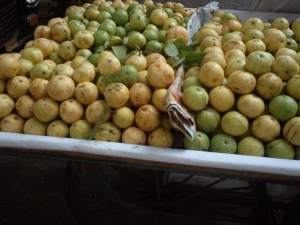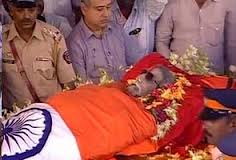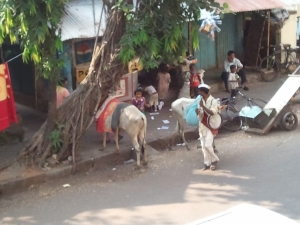One of the most irritating things about Mumbai, and something I just can’t stand in general, is the dust! Yes, my friends, I am talking about pounds of dust that just float in the air on a daily basis, any time of the day or night. Even though Mumbai is a mega metropolis, the lack of good road infrastructures, massive construction sites around the city, and the uncontrollable fumes and exhaust from the millions of cars that buzz in and through the city, make Mumbai a magnet for dirt, grime, and dust.
There are no words to describe my irritation when I walk into my house and I see a layer of dust sitting pretty on my furniture and windows, barely two days after the maid has dusted the house! My god, where does this dust come from? All the windows at home have to be shut, even though I hate them being shut. And yet, the dust finds a way to creep into the house and make itself comfortable on every bleeding object and furniture there is. Even our window panes get greasy and dusty just barely after they have been cleaned with Windex.
Just last Sunday, we called in professional cleaners, who came in with all their machinery and spent 6 hours cleaning the windows and furniture in the house. They did a pretty good job and the house was spotless. I was relieved and relaxed, being in the luxury of an immaculately clean house. But like all good things that come to an end, this too was not meant to last. Within 48 hours, the dust was back, with full vengeance this time. When I asked the cleaners how dust creeps in, they said that since there was so much of it in the air, it just floats into the house through any tiny cracks and crevices in the walls, especially when you live on the main road, like I do. Technically, I do not live on the main road. The lane on which I live used to be a quiet, peaceful lane, with a handful of cars passing by. Now, this lane has become host to big trucks, schools buses, and a battalion of cars, that find it more convenient to travel through the smaller arteries of my neighborhood, than get stuck in the gruesome traffic of the main road. What used to be a peaceful neighborhood has now become a haven for two and four-wheelers that whiz in and out of these smaller lanes, bringing with them, all the possible dust and fumes that one can imagine. Don’t even get me started on my thoughts on the quality of air in Mumbai!
By the way, the cleaners also added, “Madam, this problem of dust is the bane of the entire city of Mumbai.” I was not surprised.
I can’t imagine that I have moved from San Francisco, where I literally had to dust the house once a week, to Mumbai, where I am surrounded by dust, both in and out of the house. I am trying to make peace with the fact that I may never be able to have a house that is dust-free or have minimum dust. It’s challenging to do so when you have a high sense of hygiene and cleanliness, like I do. Let’s not forget that I also have an OCD about clean furniture…..but just don’t have the time or patience to maintain them in Mumbai.
Oh, the quandaries of living in Mumbai….will they ever end?
















